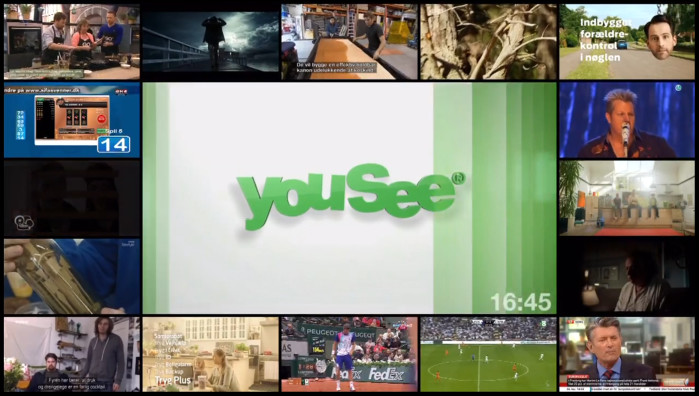
After more than 40 years of operation, DTVE is closing its doors and our website will no longer be updated daily. Thank you for all of your support.
Mixed TV numbers for TDC as migration to YouSee brand completed
 Danish telco posted mixed results in TV in the second quarter, following its consolidation of the Danish consumer business under the YouSee brand formerly reserved for its cable network.
Danish telco posted mixed results in TV in the second quarter, following its consolidation of the Danish consumer business under the YouSee brand formerly reserved for its cable network.
TDC managed to increase its TV subscriber base by 5,000 in the first half of the year, thanks to the signing of a contract with a large local antenna association redistributor, which added 18,000 customers, and a strategic partnership with Trefor, which added 12,000, partly offset by declines elsewhere. For the second quarter alone, TDC lost 6,000 subscribers.
Profit from TV in Denmark was hit by customers migrating to smaller packages. Consumer TV ARPU fell by DKK2 in Q2 against the same period last year.
Overall, TV in Denmark produced revenues of DKK1.062 billion for the quarter, flat year-on-year. The Danish group produced revenues of DKK2.686 billion overall, down 3%, and EBITDA of DKK1.64 billion, down 4.2%, pushed lower by declining fixed voice sales.
In Norway, cable subsidiary Get TV added 2,000 TV customers in Q2, following small losses for the previous two quarters. TV revenue grew in the first half thanks to rises in ARPU as well as the subscriber base growth, but tailed off in Q2 thanks to more intensive price competition.
The quarter saw TDC introduce a new set-top box and advanced user interface, which it said had been well received by the first 20,000 customers to sue it.
Norwegian TV revenues amounted to NOK359 million for Q2, up 0.6%. Overall revenue was NOK964 million, up 3.2%, and EBITDA rose by 9.7% to NOK430 million thanks to a 12.3 rise in residential broadband revenue.
Get also saw the launch of a new set-top, the Get box II, which the company said had been well-received.
TDC said it had successfully consolidated the consumer business under the YouSee brand after migrating over a million customers to a single IT system, aligning mobile portfolios and rebranding retail outlets. The company said that the change may have negatively impacted customer experiences in the short run, but would provide a platform for a better and simpler experience in the future. The brand merger was completed on July 1.


